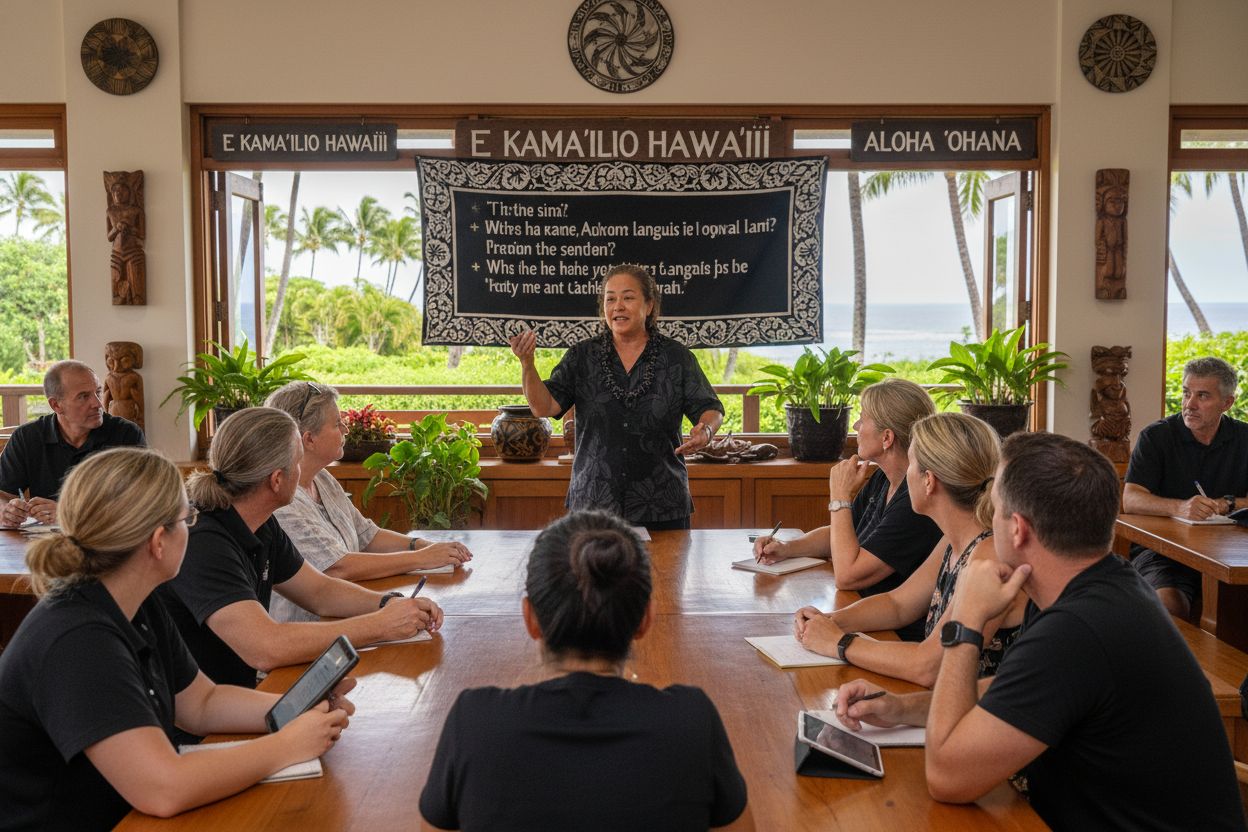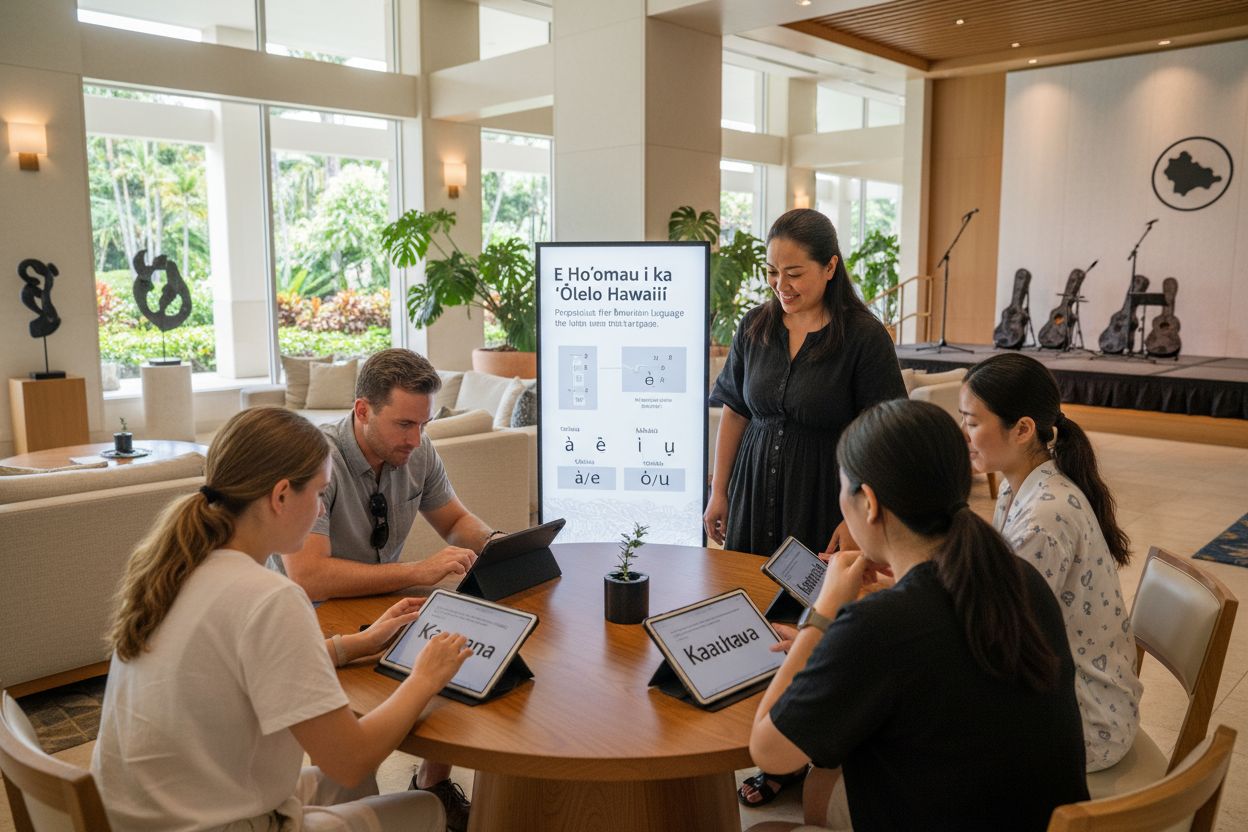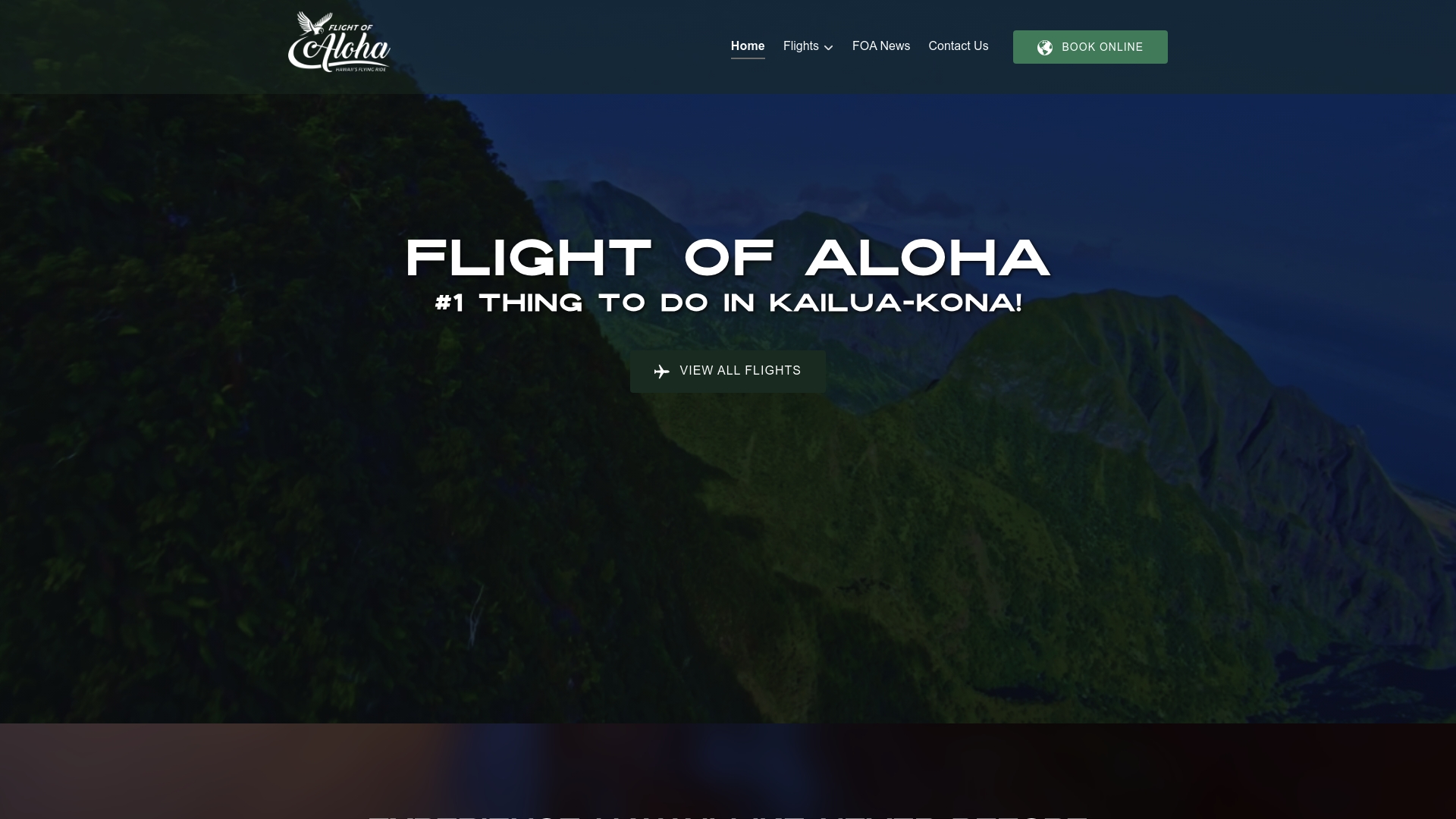Hawaiian Language in Tourism: Complete Guide

Over 600,000 travelers visit Hawai’i each month, but only a small fraction understand the important role Hawaiian language plays in shaping their experience. Language is not just about words here. It carries centuries of stories, values, and identity. Understanding how Hawaiian language weaves into modern tourism reveals new layers of connection, respect, and meaning that many visitors miss during their time on the islands.
Key Takeaways
| Point | Details |
|---|---|
| Cultural Bridge | The Hawaiian language serves as a vital connection between visitors and the islands’ rich heritage, fostering meaningful cultural engagement. |
| Innovative Integration | Modern tourism involves more than translation; it encompasses immersive language experiences that deepen visitors’ understanding of Hawaiian culture. |
| Responsible Language Use | Tourists and professionals must practice accurate pronunciation and contextual understanding to honor the significance of Hawaiian language. |
| Avoiding Pitfalls | Common linguistic errors can diminish cultural respect; learning from native speakers and attending workshops will enhance accuracy and engagement. |
Table of Contents
- Defining Hawaiian Language In Modern Tourism
- Types Of Hawaiian Language Usage In Travel
- Enhancing Visitor Experiences Through Language
- Cultural Sensitivity And Responsible Language Use
- Common Mistakes And How To Avoid Them
Defining Hawaiian Language in Modern Tourism
In the vibrant landscape of Hawaiian tourism, language serves as more than just communication—it’s a powerful cultural bridge connecting visitors with the rich heritage of the islands. According to the Hawai’i Tourism Authority, the Hawaiian language renaissance since the 1970s has transformed how cultural experiences are presented and understood by tourists.
The evolution of Hawaiian language in tourism represents a profound shift from mere translation to meaningful cultural engagement. Key aspects of this transformation include:
- Authentic Representation: Moving beyond superficial language use to genuine cultural storytelling
- Educational Integration: Incorporating Hawaiian language into visitor experiences
- Cultural Respect: Ensuring language is used with proper context and reverence
Modern Hawaiian tourism now views language as a living, breathing element of cultural exchange. Read more about Hawaiian cultural experiences that demonstrate how language connects travelers with the authentic spirit of the islands. The Maemae Toolkit and Kūkulu Ola program highlight institutional efforts to preserve and promote Hawaiian linguistic heritage, transforming tourism from a transactional experience into a meaningful cultural dialogue.
Visitors who engage with Hawaiian language don’t just hear words—they unlock deeper understanding of Hawaiian traditions, values, and storytelling practices that have been passed down through generations.
Types of Hawaiian Language Usage in Travel
Hawaiian language usage in travel has evolved from simple translation to a rich, immersive cultural experience that transforms visitor interactions. According to the Hawai’i Tourism Authority’s innovative Kūkulu Ola program, language integration now goes far beyond basic communication, creating meaningful cultural exchanges for travelers.
Key Language Engagement Approaches
Tourists encounter Hawaiian language through multiple engaging formats:
- Immersive Sessions: Monthly language workshops at hotels and community centers
- Storytelling Experiences: Narratives shared using traditional Hawaiian linguistic structures
- Cultural Performances: Chants and songs that showcase linguistic heritage
- Interpretive Signage: Bilingual information with cultural context
The E ʻŌlelo Hawaiʻi Kākou initiative exemplifies this approach by offering hands-on language experiences tailored specifically for visitors. Learn more about authentic Hawaiian experiences that bring language to life beyond mere words.
Modern Hawaiian tourism recognizes language as more than communication—it’s a gateway to understanding the islands’ deep cultural narratives. By integrating Hawaiian words, phrases, and linguistic traditions into travel experiences, visitors gain insights into the profound connection between language, history, and the spirit of Hawai’i.

Here’s a comparison of key approaches to Hawaiian language integration in tourism:
| Approach | Description | Visitor Benefit |
|---|---|---|
| Immersive Sessions | Live workshops on Hawaiian language | Active participation Learning basics |
| Storytelling Experiences | Narratives using traditional idioms | Cultural immersion Deeper understanding |
| Cultural Performances | Chants, songs in Hawaiian | Emotional connection Art appreciation |
| Interpretive Signage | Bilingual info with context | Self-guided learning Place-based meaning |
Enhancing Visitor Experiences Through Language
Cultural language integration transforms tourist experiences from passive observation to active engagement. According to research published in the PASOS journal, English-speaking visitors consistently report a desire for deeper cultural representation beyond superficial interactions, highlighting the critical need for meaningful linguistic connections.
Strategies for Meaningful Language Experiences
Enhancing visitor experiences through language involves multiple innovative approaches:
- Interactive Language Learning: Quick phrase workshops and cultural context sessions
- Contextual Interpretation: Explaining Hawaiian words within their cultural significance
- Storytelling Techniques: Using language as a narrative bridge between visitors and local traditions
- Immersive Communication: Encouraging tourists to practice and understand Hawaiian expressions
Discover our unique cultural experiences that bring Hawaiian language to life through dynamic, engaging interactions. By moving beyond traditional translation, tourism operators can create profound connections that resonate with visitors’ curiosity about Hawaiian culture.
Language serves as more than a communication tool—it’s a gateway to understanding the soul of Hawai’i. When visitors learn and appreciate Hawaiian words, they transform from mere tourists to cultural participants, gaining insights into the rich historical and spiritual landscape of the islands.
Cultural Sensitivity and Responsible Language Use
Linguistic respect stands at the heart of meaningful cultural engagement in Hawaiian tourism. According to responsible tourism guidance, understanding and implementing culturally sensitive language practices goes far beyond simple translation—it’s about honoring the deep spiritual and historical significance of Hawaiian communication.
Key Principles of Responsible Language Interaction
Tourists and tourism professionals must navigate linguistic interactions with mindful awareness:
- Accurate Pronunciation: Respecting Hawaiian language’s unique phonetic nuances
- Contextual Understanding: Learning words’ cultural and historical meanings
- Permission and Consent: Asking before photographing or recording cultural experiences
- Avoiding Stereotypes: Rejecting simplified or romanticized linguistic representations
The Hawai’i Tourism Authority’s Maemae Toolkit provides critical guidance for accurate linguistic representation, including proper use of ʻokina (glottal stop) and kahakō (macron), which fundamentally change word meanings. Explore our guide to cultural experiences to understand how language reflects deeper cultural narratives.
Responsible language use is not about perfection, but genuine respect. By approaching Hawaiian language with humility, curiosity, and a commitment to understanding, visitors transform their travel experience from mere tourism to meaningful cultural exchange.
Common Mistakes and How to Avoid Them
Language accuracy in Hawaiian tourism requires careful attention to nuanced details that many visitors inadvertently overlook. According to research, common mistakes often stem from limited exposure to native speakers and superficial understanding of linguistic complexities.
Frequent Linguistic Pitfalls
Tourists and professionals frequently encounter these language challenges:
- Mispronunciation: Incorrectly articulating Hawaiian words and place names
- Diacritical Neglect: Omitting critical marks like ʻokina and kahakō
- Grammatical Errors: Misusing vocabulary or sentence structures
- Cultural Misrepresentation: Applying Hawaiian words without proper context
Particularly critical is the use of diacritical marks, which fundamentally change word meanings. For instance, writing “Hawaii” instead of “Hawaiʻi” or “Lanai” instead of “Lānaʻi” demonstrates a lack of linguistic respect. Learn more about authentic cultural experiences that emphasize precise language usage.
Avoiding these mistakes requires humility, active learning, and a commitment to understanding Hawaiian language beyond surface-level interactions. Engaging with native speakers, attending cultural workshops, and approaching language with genuine curiosity can transform potential errors into opportunities for meaningful cultural connection.
![]()
Experience Hawaiian Language and Culture Like Never Before
Are you searching for a truly immersive way to connect with Hawaiʻi’s legendary language and stories during your visit? The article highlights a common challenge for many travelers: the desire for real cultural engagement rather than surface-level interactions or simple translations. At Flight of Aloha, we answer this need by blending breathtaking visuals, scent, and motion with genuine Hawaiian storytelling. Our flying theater attraction brings you right into the heart of the islands, letting you soar over iconic landscapes while experiencing the language and legends that define Hawaiʻi. This is not just sightseeing. It is entering a living story shaped by traditions and values you read about in Hawaiian Language in Tourism: Complete Guide.

Ready to become more than just a tourist? Step into an adventure where every ride deepens your understanding of Hawaiian heritage. Book your tickets now at Flight of Aloha and discover why our approach, rooted in Aloha, turns cultural curiosity into unforgettable moments. Spots fill fast, especially for our most popular cultural ride films and VIP packages. Take the next step to bring Hawaiʻi’s language and legends to life with your own unforgettable journey.
Frequently Asked Questions
How has the Hawaiian language evolved in modern tourism?
The Hawaiian language has transformed from simple translation to meaningful cultural engagement, emphasizing authentic representation, educational integration, and respect for cultural context in tourism experiences.
What are some ways tourists can engage with the Hawaiian language?
Tourists can participate in immersive language workshops, enjoy storytelling experiences, attend cultural performances, and engage with interpretive signage that offers bilingual information with context.
Why is cultural sensitivity important in using the Hawaiian language?
Cultural sensitivity ensures accurate pronunciation, contextual understanding, and respectful interactions. It honors the spiritual and historical significance of Hawaiian communication and enhances the authenticity of visitor experiences.
What common mistakes should tourists avoid when using the Hawaiian language?
Tourists should avoid mispronouncing words, neglecting diacritical marks such as ʻokina and kahakō, making grammatical errors, and misrepresenting cultural meanings by using Hawaiian terms without proper context.
